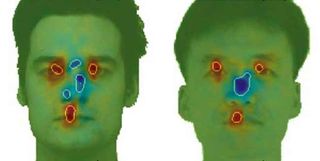Unemployed? Get a Face Lift!

The recession has caused plastic surgery sales to sag, but one sector has been at least partly buoyed by the bad times.
"I'm 56 and I've been in the music business for 35 years. We're not having a good year and I know I'll soon have to interview," said Jeff Grabow, a music marketing executive in Los Angeles, who recently spent $17,000 on a facelift, according to Reuters this week.
However, the number of surgical procedures dropped 9 percent in 2008, according to numbers released last month by the American Society of Plastic Surgeons, though minimally-invasive procedures rose 5 percent (wrinkle-blasting laser treatments are up 456 percent among men over the past three years).
The industry is trying to put a good face on the data:
"Like most sectors, plastic surgery is feeling the effects of the economic downturn," said John Canady, the society's president. "However, repeat patients and those putting off surgery, likely sustained demand for some minimally-invasive procedures. Growth in demand will likely return as the recession eases and baby boomer's offspring begin to explore surgical options."
White people are cutting back, but others ethnic groups may ultimately lift the industry.
What the society calls "ethnic cosmetic procedures" increased 11 percent in 2008, while procedures among Caucasians dropped 2 percent. Hispanics led the way with an 18 percent increase.
Sign up for the Live Science daily newsletter now
Get the world’s most fascinating discoveries delivered straight to your inbox.
"We're seeing a rise in Hispanics opting for cosmetic procedures that coincides with the growth we're seeing in the nation's population," Canady said. "Less social stigma, as well as advances in procedures allow patients to maintain their ethnic look. While the majority of patients continue to be Caucasian, the profile of the typical patient is changing."
Robert Roy Britt is the Editorial Director of Imaginova. In this column, The Water Cooler, he looks at what people are talking about in the world of science and beyond.
Robert is an independent health and science journalist and writer based in Phoenix, Arizona. He is a former editor-in-chief of Live Science with over 20 years of experience as a reporter and editor. He has worked on websites such as Space.com and Tom's Guide, and is a contributor on Medium, covering how we age and how to optimize the mind and body through time. He has a journalism degree from Humboldt State University in California.
Most Popular


